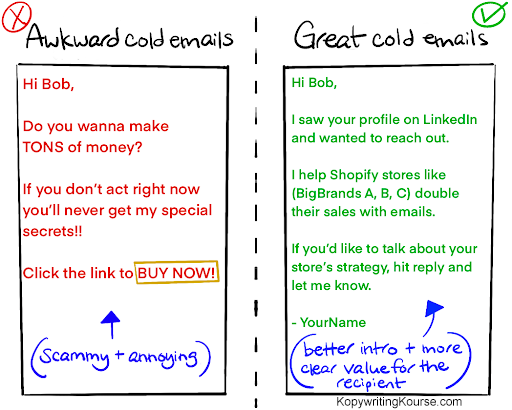Avoid cold emails with really bad introductions
Updated on

Most cold emails bomb because they scream “sales pitch” from the first line. The image above nails the difference: one email feels spammy and desperate, the other feels natural and valuable.
What’s happening here
The “Great” email works because it opens with relevance (“saw your profile on LinkedIn”) and a clear offer of value (“help Shopify stores double their sales”). It reads like a friend reaching out, not a salesperson attacking.
Why it works
- Starts with context, not a pitch
- Establishes quick credibility
- Offers a benefit, not a buy-now link
- Uses conversational language
- Ends with a soft, easy CTA
Real-world examples
- Lavender increased reply rates by 3x by personalizing intros
- HubSpot’s outreach emails use mutual connections for instant trust
- Gong’s sales team tested soft CTAs and saw a 26% lift in call replies
- Copy.ai cut their first lines by 50% and doubled response rates